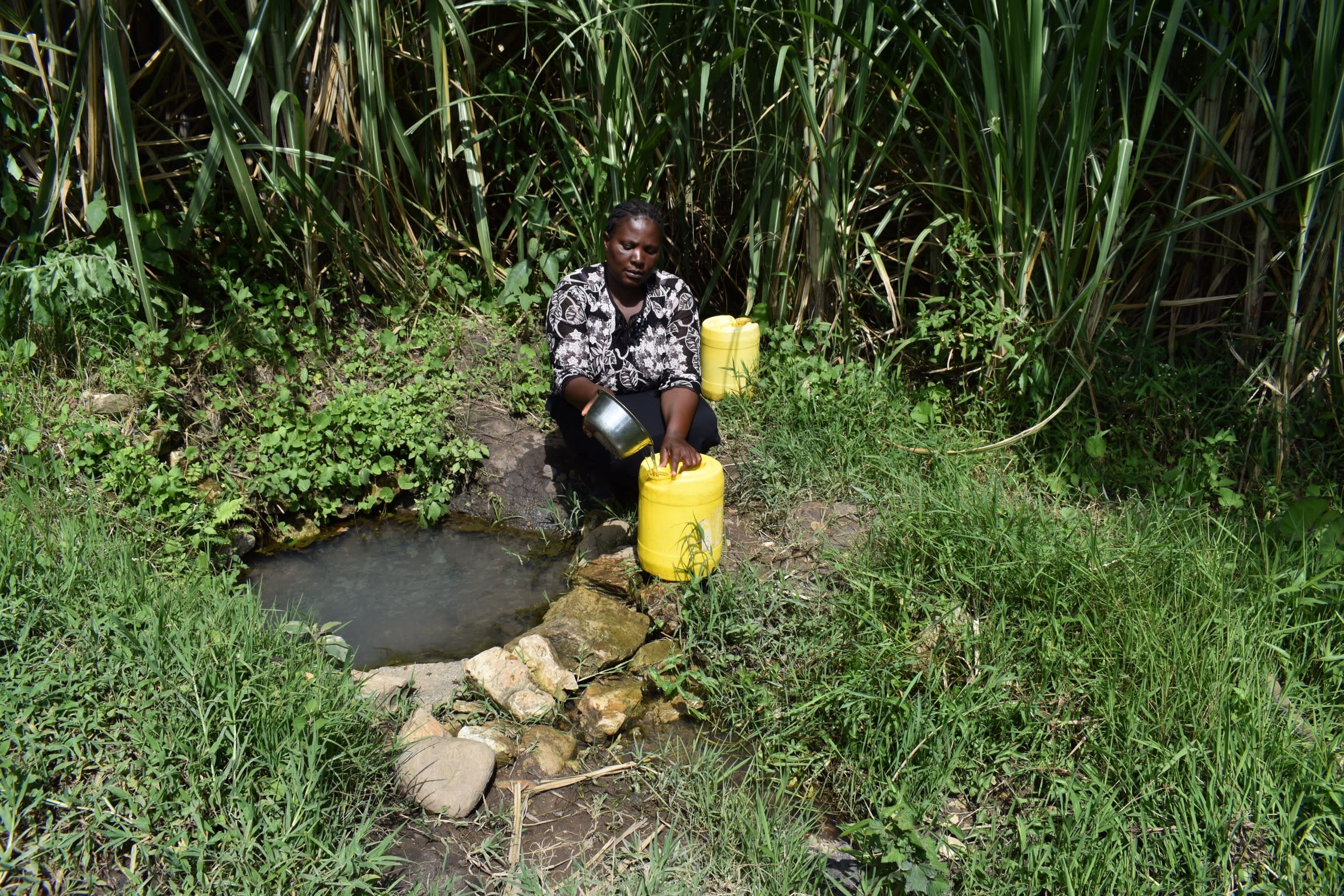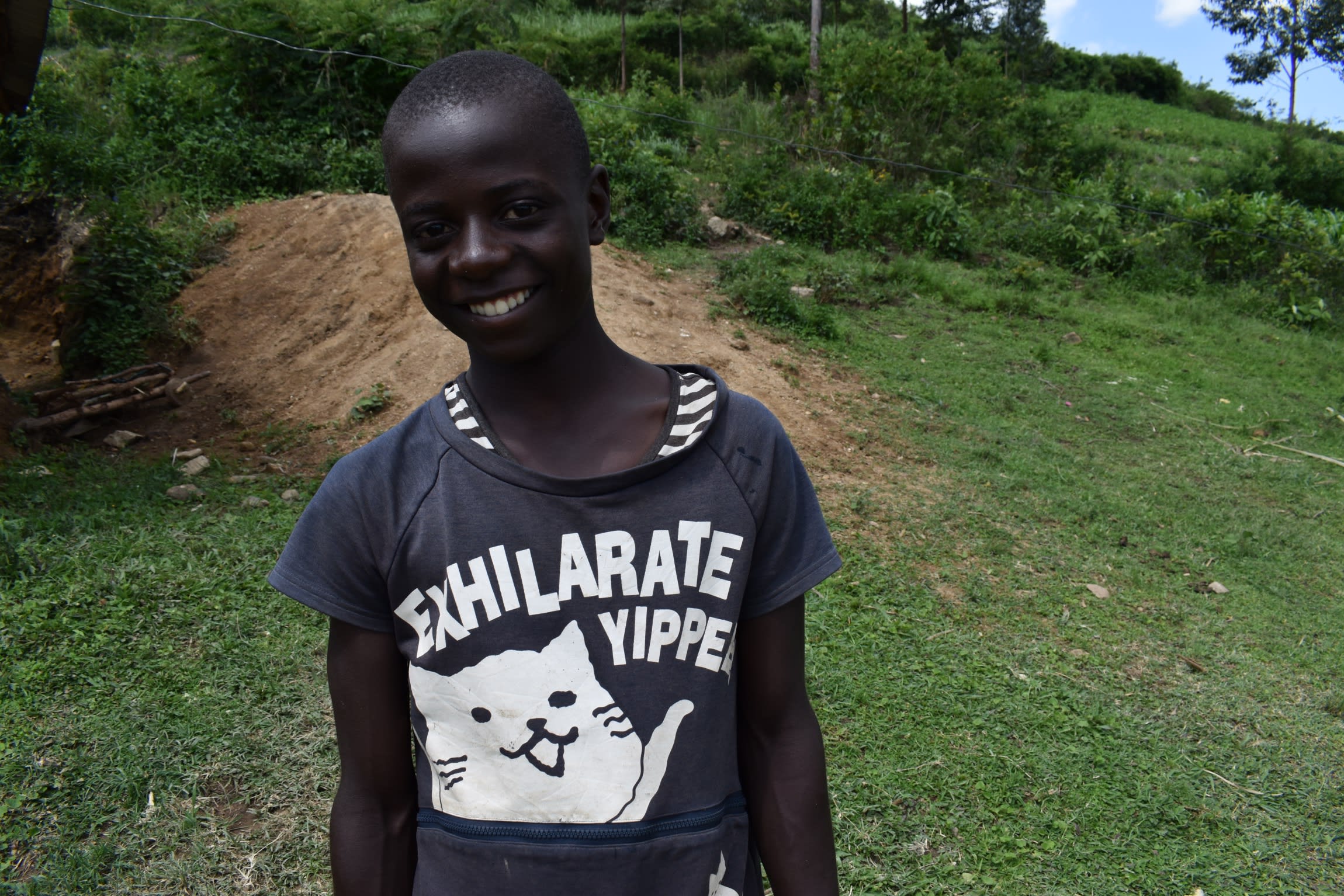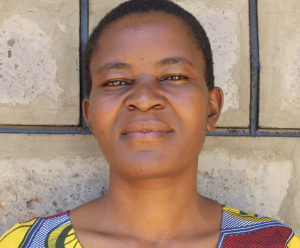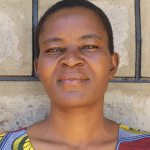The women of Muriola fetch water as early as they can in an effort to get the cleanest water possible and to avoid quarreling with their neighbors when the queues to get water get long. And, unfortunately, many times they are unsuccessful in both respects.
Because of the spring's small, slippery opening, only one person can get water at a time. In a community of 168 people, this becomes a major issue. Neighbors often lose their patience with one another.
And no matter how early or how carefully they scoop up water from Zacharia Chilali Spring, and no matter how much they sieve it, the water still makes everyone in Muriola ill. This isn't surprising by looking at the spring: algae lines its edges and dead leaves float in the water. Also, the spring is situated amidst a sugarcane farm where fertilizer is used, which no doubt seeps into the water.

"I am not happy as a mother, because [during] the time I need to take care of my children, [I] am in [the] hospital suffering from typhoid," said 40-year-old farmer Joyce Khakasa, pictured above at the spring.
15-year-old Lazarus M. (in the picture below) says he gets sick everytime he drinks water, so he's stopped having anything to drink before he leaves for school. "I have changed my routine of going to the spring because whenever I go to the spring early in the morning, [I] am infected, which causes me to have headache and dizziness during class time. It affects my education so much."

With a reliable source of safe water, the people of Muriola will feel better physically. Fetching water will be so much easier (no more scooping and pouring!) and take less time. They will have more time and energy for more productive things.
"If the spring [is] protected, I shall be the happiest woman in the world," Joyce concluded.
What We Can Do:
Spring Protection
Protecting the spring will help provide access to cleaner and safer water and reduce the time people have to spend to fetch it. Construction will keep surface runoff and other contaminants out of the water. With the community’s high involvement in the process, there should be a good sense of responsibility and ownership for the new clean water source.
Fetching water is a task predominantly carried out by women and young girls. Protecting the spring and offering training and support will, therefore, help empower the female members of the community by freeing up more of their time and energy to engage and invest in income-generating activities and their education.
Training on Health, Hygiene, COVID-19, and More
To hold trainings during the pandemic, we work closely with both community leaders and the local government to approve small groups to attend training. We ask community leaders to invite a select yet representative group of people to attend training who will then act as ambassadors to the rest of the community to share what they learn. We also communicate our expectations of physical distancing and wearing masks for all who choose to attend.
The training will focus on improved hygiene, health, and sanitation habits in this community. We will also have a dedicated session on COVID-19 symptoms, transmission routes, and prevention best practices.
With the community’s input, we will identify key leverage points where they can alter their practices at the personal, household, and community levels to affect change. This training will help to ensure participants have the knowledge they need about healthy practices and their importance to make the most of their water point as soon as water is flowing.
Our team of facilitators will use a variety of methods to train community members. Some of these methods include participatory hygiene and sanitation transformation, asset-based community development, group discussions, handouts, and demonstrations at the spring.
One of the most important issues we plan to cover is the handling, storage, and treatment of water. Having a clean water source will be extremely helpful, but it is useless if water gets contaminated by the time it is consumed. We and the community strongly believe that all of these components will work together to improve living standards here, which will help to unlock the potential for these community members to live better, healthier lives.
We will then conduct a small series of follow-up trainings before transitioning to our regularly scheduled support visits throughout the year.
Training will result in the formation of a water user committee, elected by their peers, that will oversee the operations and maintenance of the spring. The committee will enforce proper behavior around the spring and delegate tasks that will help preserve the site, such as building a fence and digging proper drainage channels. The fence will keep out destructive animals and unwanted waste, and the drainage will keep the area’s mosquito population at a minimum.

 Protected Spring
Protected Spring
 Rehabilitation Project
Rehabilitation Project






































